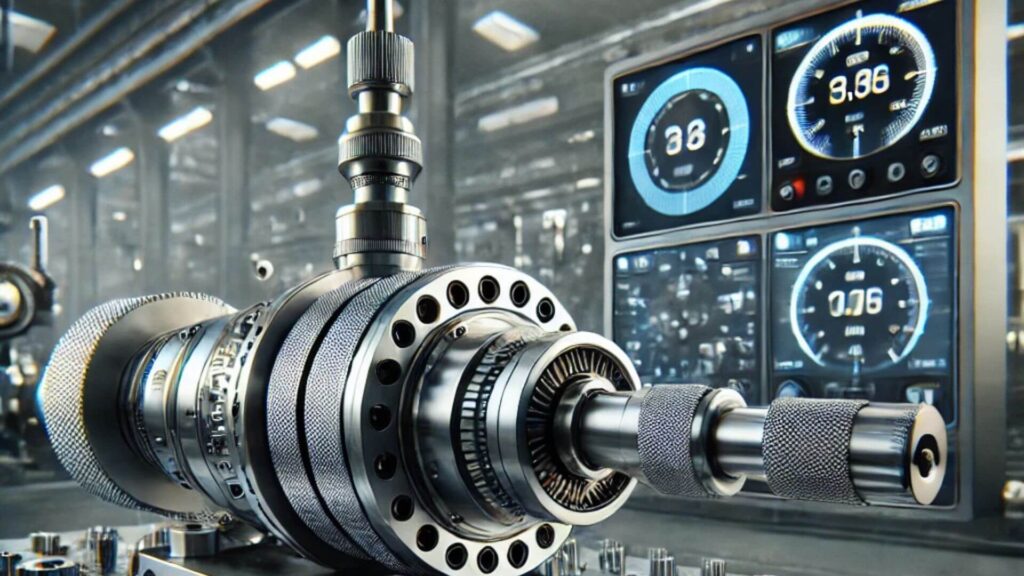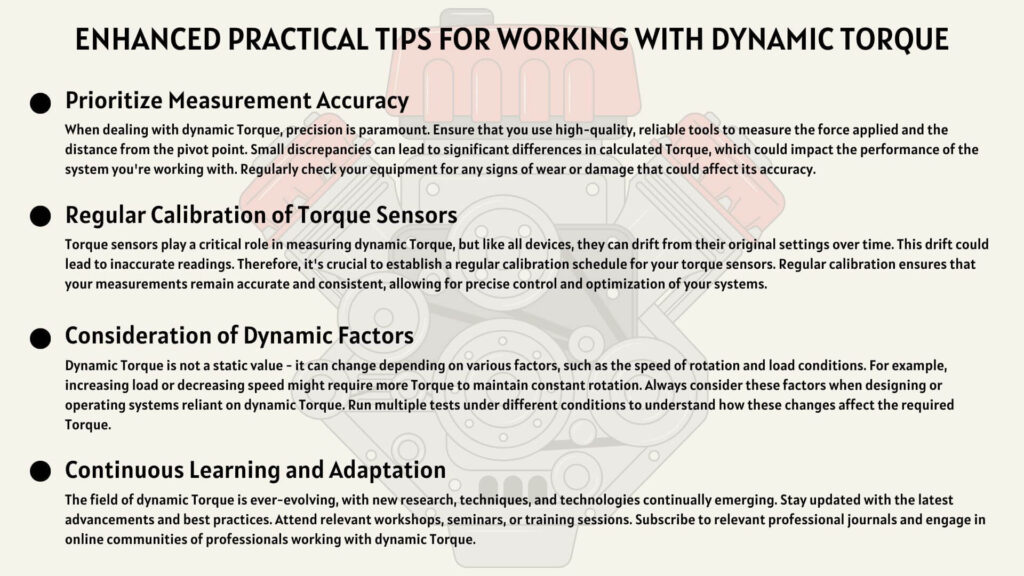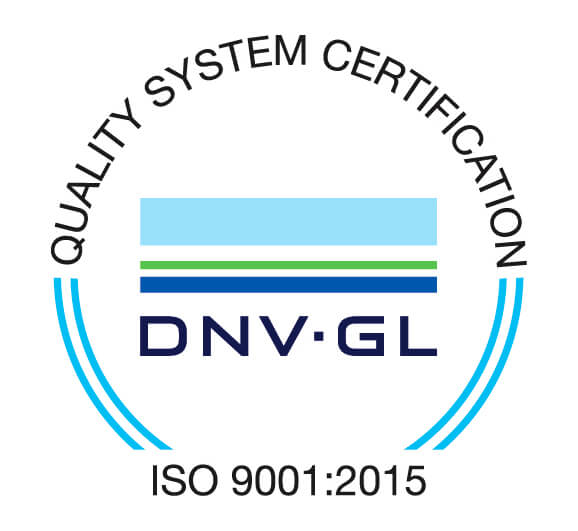Dynamic Torque is a powerful tool used in many industries, from manufacturing to engineering. It is essential to understand how machines and other objects interact with each other and the environment they inhabit. In this comprehensive guide, we will explain what dynamic Torque is, its different types, its benefits, ways to measure it accurately, and tips on how to use it safely and effectively. We’ll also look at various applications where knowledge of dynamic Torque can be invaluable. By the end of this guide, you should have an in-depth understanding of dynamic Torque and how best to apply it in your work or study environment.
Table of Contents
ToggleWhat is Dynamic Torque?

Dynamic Torque measures the twisting force that causes rotation in an object. Unlike static Torque, which measures the force required to start an object’s rotation, dynamic Torque measures the force needed to keep the object rotating at a constant rate. It is an essential factor in designing and operating many mechanical systems, including engines, turbines, and industrial machinery.
The diagram above illustrates how dynamic torque works. The force (F) applied at a distance (r) from the pivot point results in a torque (τ).
Dynamic Torque Vs. Static Torque: Understanding the Differences
The primary difference between dynamic Torque and static Torque lies in their application and the state of motion they relate to.
Static Torque
Static Torque is the force needed to initiate movement from a standstill or to stop an already moving object. It’s the amount of Torque required to overcome the inertia of a stationary object and start its rotation. This concept is commonly used in scenarios where an object needs to be moved from a rest position, such as starting a car engine or unscrewing a tightly fixed bolt.
Dynamic Torque
On the other hand, dynamic Torque refers to the twisting force that maintains an object’s constant rotational motion once it has started moving. It is the amount of torque required to overcome any frictional forces and maintain an object’s constant rotation. Dynamic torque is frequently utilized in relation to continuously running systems, such as electric appliance motors or turbines in power plants.
Here is a simple comparison to illustrate the differences:
Definition
- Static Torque: Torque to start Rotation
- Dynamic Torque: Torque to maintain rotation
Application
- Static Torque: Starting/stopping motion
- Dynamic Torque: Sustaining constant motion
Example Usage
- Static Torque: Turning a bolt
- Dynamic Torque: Running a motor
Understanding the difference between these two types of Torque is crucial because it helps engineers and technicians design and operate mechanical systems more effectively. Each type of Torque plays a unique role in different stages of motion and requires specific considerations for optimal performance.
Advanced Applications of Dynamic Torque
Dynamic Torque has significant applications across various industries, including automotive, electronics, and aviation.
Automotive Industry
In the automotive industry, it is critical in engine design. It determines how much force the engine can apply to the wheels through the drivetrain for a given amount of fuel.
Electronics Industry
In the electronics industry, it is essential in the design of electric motors and generators. It helps determine these devices’ efficiency and ability to handle loads.
Aviation Industry
In the aviation industry, it plays a crucial role in designing and operating jet engines and propellers. It helps determine the power output and efficiency of these components.
Measuring and Calculating Dynamic Torque

It is critical in numerous applications, particularly when acceleration or deceleration must occur within a specific time frame. To determine the appropriate clutch or brake size for such situations, you must first calculate the dynamic Torque needed to initiate or halt the load. This calculation involves several key variables:
- I: The rotational load inertia, measured in lb-in-sec². This represents the resistance of the load to any change in its rotation speed.
- ω: The differential slip speed, measured in rpm. This denotes the speed difference between a system’s input and output.
- t: The time taken to reach the desired speed, measured in seconds.
- D: The load drag torque reflected the clutch, measured in lb-in. This represents the Torque required to overcome friction and other resistive forces in the system.
Note: The factor 0.1047 converts rad/sec to rpm in the equation.
Given these variables, the following equation allows you to determine dynamic Torque (TD):
TD = 0.1047(Iω)/t – D
By accurately measuring these variables and correctly applying this equation, you can effectively calculate the dynamic Torque in your system. This information is crucial in selecting and sizing the right components, such as clutches and brakes, to ensure optimal performance and efficiency.
Enhanced Practical Tips for Working with Dynamic Torque
It isn’t just important to know how dynamic torque works but also how to use it properly and safely. Here are some tips for working with dynamic Torque:

Prioritize Measurement Accuracy
When dealing with dynamic Torque, precision is paramount. Ensure that you use high-quality, reliable tools to measure the force applied and the distance from the pivot point. Small discrepancies can lead to significant differences in calculated Torque, which could impact the performance of the system you’re working with. Regularly check your equipment for any signs of wear or damage that could affect its accuracy.
Regular Calibration of Torque Sensors
Torque sensors play a critical role in measuring dynamic Torque, but like all devices, they can drift from their original settings over time. This drift could lead to inaccurate readings. Therefore, it’s crucial to establish a regular calibration schedule for your torque sensors. Regular calibration ensures that your measurements remain accurate and consistent, allowing for precise control and optimization of your systems.
Consideration of Dynamic Factors
Dynamic Torque is not a static value – it can change depending on various factors, such as the speed of rotation and load conditions. For example, increasing load or decreasing speed might require more Torque to maintain constant rotation. Always consider these factors when designing or operating systems reliant on dynamic Torque. Run multiple tests under different conditions to understand how these changes affect the required Torque.
Continuous Learning and Adaptation
The field of dynamic Torque is ever-evolving, with new research, techniques, and technologies continually emerging. Stay updated with the latest advancements and best practices. Attend relevant workshops, seminars, or training sessions. Subscribe to relevant professional journals and engage in online communities of professionals working with dynamic Torque.
Streamline Torque Measurements Using a Low-code Platform
If your business relies on accurate torque measurements, using a reliable torque wrench can significantly improve efficiency and precision. A high-quality torque wrench ensures that your torque specifications are met consistently, reducing errors and enhancing overall quality.
DATAMYTE offers advanced hardware solutions like the LightStar™ Torque Wrench, a cutting-edge torque wrench designed for accurate and reliable torque measurements. This tool provides digitized readings that can be seamlessly stored and analyzed, making it easier to maintain consistent quality and ensure compliance with industry standards.
Additionally, DATAMYTE’s solutions support layered process audits (LPA), enabling you to perform high-frequency evaluations of critical process steps. By focusing on areas with the highest risk of failure or non-compliance, you can identify and address potential issues before they escalate.
With DATAMYTE’s Torque Expert and other innovative tools, you have a complete solution for optimizing your torque measurement processes. Schedule a demo today to discover how DATAMYTE can enhance your operations and help you achieve better precision and efficiency.
Conclusion
Dynamic Torque is a powerful tool used in many industries to enhance performance. Understanding how it works and its various applications is essential for leveraging this technology effectively. Use this article as an overview of dynamic Torque and the important information surrounding it. With these principles in mind, you can confidently begin to incorporate dynamic Torque into your operations or systems.



